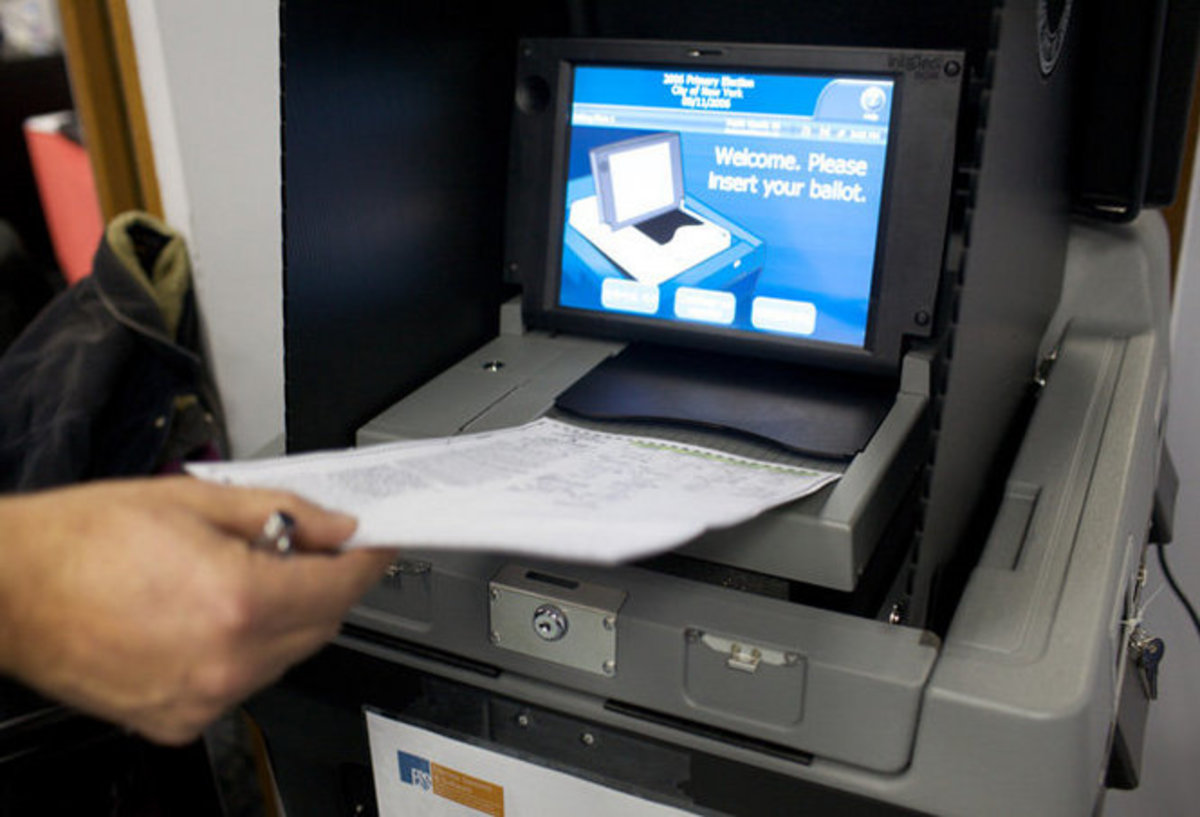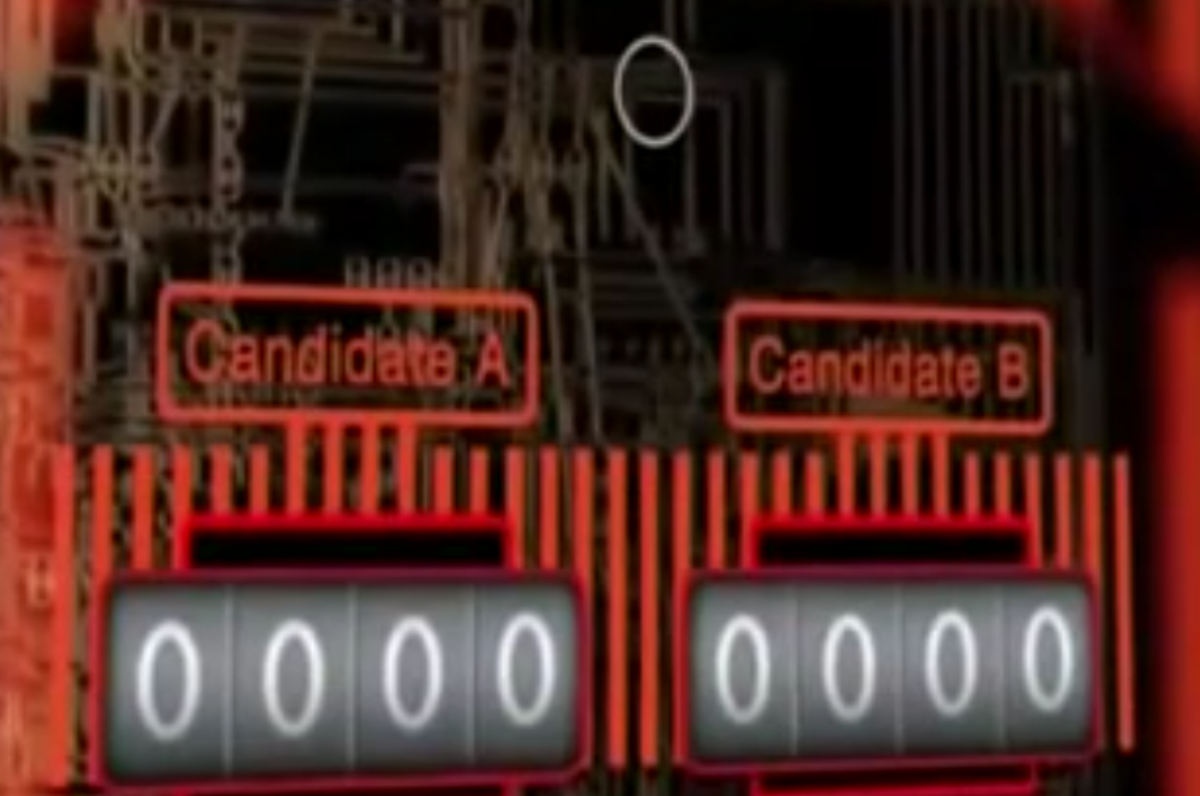By Ralph Lopez for Hubpages.com

Election officials across the country have denied requests from citizens to view and count the digital ballot images which are automatically generated in the majority of US voting precincts. The digital ballot images are a little-known feature of most US voting systems.
Noted Arizona election activist Jim March Simpson has requested copies of the digital ballot images for a number of key counties and races in the upcoming vote, including Clark County NV, Kern County CA, Los Angeles CA, Colorado counties Mesa, Gunnison, Pitkin, Eagle, Chaffee, and Denver, WA counties Seattle, King County, PA counties Lancaster and Chester, IA counties Adair, Cedar, Mitchell, Pottawattamie and Hardin, and all of Ohio.
Joe Gloria, Registrar of Voters of the Clark County, NV Election Department, answered Mr. Simpson’s request by writing in an email, which was forwarded to this reporter:
I am unable to release this information to the public without a court order.
The existence of stored digital images of the ballots cast in most US precincts was recently discovered by election integrity activists, who last summer charged that the results of the 2016 Democratic primaries were riddled with evidence of fraud. The activists and experts, one of whom includes the 100th president of the American Statistical Association, suggest that Bernie Sanders actually won the Democratic nomination. In the report “Democracy Lost: A Report on the Fatally Flawed 2016 Democratic Primaries,” the authors called for:
“decertification of the 2016 Democratic primary results in every state in which we have established a reasonable doubt as to the accuracy of the vote tally.”
In the majority of paper ballot vote-counting machines, a marked ballot is fed into an optical device which reads and counts the votes and generates a digital image of the ballot all at once. The digital images are then stored in memory. The creation of digital ballot images was meant to serve as a back-up to the original paper ballot record. The images could be easily accessed, viewed, and counted without actually handling the paper ballots.
Pioneering election integrity activist Bev Harris of Black Box Voting recently called ballot images “a new way to verify if the results are true.”
The presence of digital ballot images provides an avenue for verifying machine-counted totals, which does not require the overtime costs and special skills required to perform hand-counts of paper ballots. The kind of optical scan, paper ballot vote-counting machines in use across much of the US have been roundly criticized as being vulnerable to “hacking.”
The New York Times reported last week in “Five Possible Hacks to Worry About Before Election Day”:
“the [Election Systems & Software] DS200, an optical scanning model used in many districts, comes with an optional wireless ability. The good news: They can report results automatically. The bad news: Any wireless connection is a vulnerability.”
Election integrity activists are puzzled as to why election officials would want to keep the images from public view, except as a precursor to massive election fraud.
The ease with which US vote-counting machines can be accessed and manipulated has been demonstrated in numerous films and documentaries, including by a team at Princeton and in the HBO documentary Hacking Democracy.
Click here to see video clip below, from HBO’s Hacking Democracy (mirror)

In August, election experts affiliated with Election Justice USA, a group which describes itself as “a national coalition of election integrity activists, statisticians, attorneys, technologists, journalists and documentarians focused on restoring a true democracy in America,” documented and analyzed extensive forms of evidence that the Democratic nomination was stolen from Bernie Sanders. For example, in Massachusetts overall, where paper ballots are mostly counted by machine, Hillary Clinton edged out Bernie Sanders by about one percent, or 51% to 49% of the vote. But in precincts scattered across that state where ballots are counted by hand, Sanders won by an average of 18%.
As a safeguard to the integrity the upcoming and all future elections, the activists have called upon the public to demand the digital ballot images for their county, city, or town, and to verify the vote totals themselves.
To date Clark County NV, King County WA, Monroe County OH, and Jefferson County CO have written back that they would not comply with the citizen request for public records, as digital ballot images are classified. The election activists say that no state law prevents the counties from releasing the digital images, and that in some states, such as Colorado, state law in fact specifically treats digital ballot images as public records under the Colorado Open Records Act.
Defenders of the current system have maintained that, with over 3,000 election jurisdictions in the US, it would be impossible to hack into each one. But the FBI has warned of Russian attempts to hack into and manipulate American elections. Although US election activists scoff at the idea that Russian hackers represent the main threat, and Russian President Vladimir Putin has denied it, the FBI’s warning at the very least contradicts the argument that elections are “impossible” to manipulate, as Washington Post writer Ari Berman concluded.
Furthermore, election activists point out, in order to electronically manipulate an election, it would not be necessary to manipulate each and every election department, but only a few key swing states, and in reality only a small number of critical counties within those states.
The swing states in Tuesday’s presidential election are considered to be Colorado, Florida, Iowa, Michigan, Nevada, New Hampshire, North Carolina, Ohio, Pennsylvania, Virginia and Wisconsin.
Election integrity activists urge citizens in those states to demand copies of the digital ballot images, which can be as easy to comply with as copying electronic folders onto a thumb drive or DVD. Alternatively, an elections division can post the images, which are grouped by precinct, online. Digital ballot images (like paper ballots) cannot be traced to any individual voter.
Election fraud differs from voter fraud in that the latter consists of unqualified voters seeking to vote, or voting more than once. Election fraud takes place at the official, vote-counting level, including hacking into a machine’s tabulation software, which can be done remotely.
To determine what kind of voting machines any county or town uses, go here.

#BallotImages

